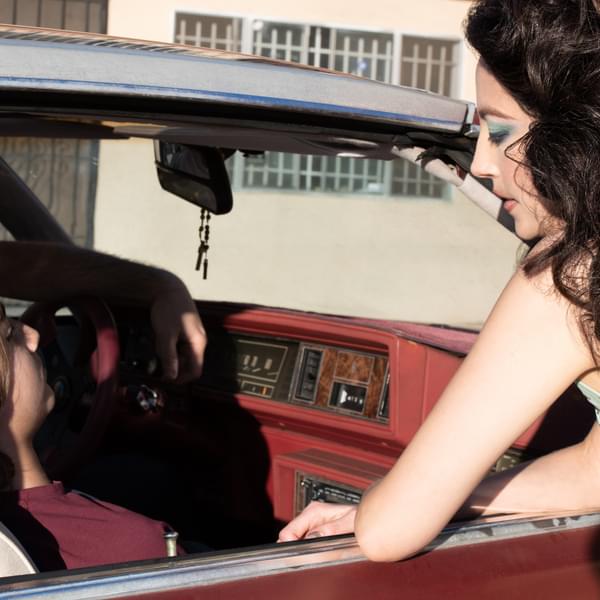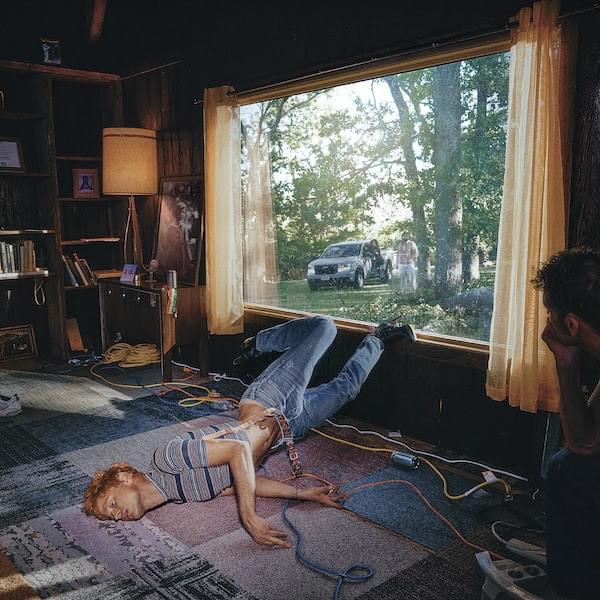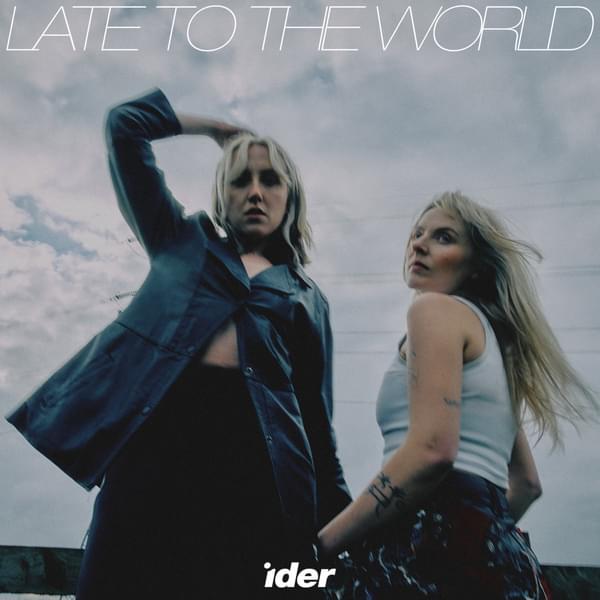
“It's funny that I'm considered an indie artist” : The Line of Best Fit meets Andrew Bird
Andrew Bird’s pre show nerves are showing a little. “It’s kind of a fancy place to do your first show”, he says looking round the expansive artist’s lounge at London’s Barbican theatre. “I’m a little on edge ’cause it’s the first one, but it’ll be OK, we did a warm up show and stuff.”
In fact when he and his three piece band comprised of Martin Dosh, Jeremy Ylvisaker and Mike Lewis take to the stage later that evening there are few hints of hesitation, despite proclamations of first show jitters and Bird’s joking enjoyment of musical hiccups and false starts, which for a musician supposedly can only be likened to some kind of kick. ” the solo shows are more emotionally exhausting; I go off on tangents more, so it’s fun to play with a band I’ve been working with for five or six years now. They all have really great ears and good ideas, the band shows are more physically tiring but I think as a band you can use a different kind of energy. Live you can hear feeling way through the songs and it gives it a kind of freshness I think, and allows to stand up to repeat listens. Nothing’s on a grid or planned as such.”
Bird’s latest and seventh studio album Break it Yourself was released via Bella Union on the 5 March, its date coinciding with this, the first in a string of European shows. “It’s probably my most ceremonious record”, he later announces to the sold out crowd at the 2,000 seater venue, and certain of its tracks (‘Eyeoneye’ for one) do take on an almost anthemic appeal live. As a wordsmith, Bird’s ideas are often as complex and camouflaged as the tangles of looped instrumentation he strings together on record and stage. However, it’s clear that Bird still finds it hard to decipher if the ideas he projects into song are now any more accessible than when he first began constructing lyrics.
“Sometimes I’ll think ‘This melody is so strong, why do I need lyrics? Why can’t I just let it be as it is?’ But to add the human voice in order to allow a melody to be better received by more people; and to use that voice to have people connect with the meaning of the words… that’s how I got into songwriting. It is funny that I’m considered an indie artist,” Bird recalls of his initial sense of being an outsider to that ‘scene’. “Back in those days I felt very out of place, I didn’t quite get what other bands were doing, it didn’t make sense to me and I was sure what I was doing didn’t make sense to them.”
The Chicagoan’s latest offering perhaps feels more accessible to a few, though at its centre it continues to present its “overarching themes… of autonomy and self-reliance” through Benjamin Button-esque love stories (‘Sifters’), ruminations on selective memory (‘Lazy Projector’), the sinking of ships and celebration in survival (‘Near Death Experience Experience’); not the most common take on essentially the human condition under a microscope. And while previous records have considered topics of this nature; of the Self versus the Group, there’s a feeling that Break it Yourself is easier to sink one’s teeth into from a lyrical perspective. “I’m dealing with on a more human level this time around. Sometimes I feel like I only ever go from the widescreen macro view to the micro. Usually I’ll just pass the middle ground, but this record is kind of hanging out more at a mid-level perspective.”
Is Break It Yourself, specifically the track ‘Eyeoneye’, on the surface a nod to self-heartbreak, actually cloaking the songwriter’s consideration of what he defines as this notion of “being so self-contained?” After a few moments of thoughtful pause and consideration he explains that while getting close to something people can identify with, the song still approached its chosen topic from a “weird angle”. The inspiration is still there he agrees; “the biological implications of the immune system attacking its own body. I touch on that a little bit”, he continues “that’s what got me thinking about it but I didn’t actually use that specific idea in the song.”
With lyrics camouflaging perhaps far larger ideas than their canvases it’s often the case their meaning isn’t wholly revealed to even their creator until further down the line. “Usually it’s during interviews. It’s a bit like therapy or something,” Bird laughs. “I don’t feel like I’m looking for the more obtuse ways to explain things, but there’s a code I suppose, and those codes can sometimes become more interesting when they’re taken away from the everyday . The songs on this record still take an unusual look at things. Really the only conscious thing I do when I’m writing is to consider the universe and to look at things from a different angle. a phrase will get under my skin that is perhaps too good to ignore, and so I’ll keep working on it until I find the melody. Like “I’m the one who sank the Lusitania“; that lyric occurred to me five years ago and I thought ‘that’s compelling, though I have no idea what that means’. But then I’d find something else: “the sinking of the main” and “laying lines along the shore”, and so this metaphor builds and builds and slowly reveals itself. At some points I sit down and I really have to hammer out the lyrics…’ and yet at others he states there is an engagement in a different thinking process entirely, a sort of puzzlement to his observations: “I don’t do crosswords or any kind of games like that, but the wordplay within some of my lyrics really comes from those processes of thinking.”
As an offshoot from his musical ventures, there’s the desire to possess gallery space for the 2010 project he worked on with Ian Schneller at New York’s Guggenheim. The installation centred on the concept of echolocation, while visually the gallery’s spiral space was littered with a forest of horns echoing the aesthetic appeal of the archaic Victrola record players. With a collection of horns of varying sizes, alongside the two-headed speaker horn which regularly appears at Bird’s live performances “it’s a project that’s still in development, and one which hoping to fully flesh out in the hope that they will be able to continue it over the coming years”. More recently, January’s stop over at A Room for London, a temporary installation commissioned by Living Architecture, in which a boat atop the Southbank Centre’s Queen Elizabeth Hall is being continually occupied by artists, was debuted by Bird. “It was fun,” he states in spite of finding himself separate from the audience who watched via a feed in the Southbank’s lobby. “It occurred to since I was the first performer that if they put a little monitor in so you could hear the audience then that would help. But it was a great experience and I got to stay there for two nights.”
With such an array of styles featuring on his latest record, and indeed all projects he has dabbled in; from the Suzuki training of his youth, to the conservatories of his late teens, which he confessed to finding socially oppressive and restrictive, “I changed that up for a ska-punk band when I was 19,” he explains early on, it isn’t so surprising as one might fear to hear Bird utter the words: “I stopped listening to violinists in my early twenties.” Instead it was the more contemporary violinists he encountered who in turn proved themselves a gateway to the jazz tenor players of the 1930s. “First I heard Stephane Grappelli. You know, when you’re young you don’t know where the good stuff is. So I got some of his records… good but a little cheesy. But then I discovered he played with Django Reinhardt in the ’30s, delved into those records and got interested in that style”. Bird went on to find saxophonists Colmane Hawkins and Lester Young through this musical family tree process. It’s clear his musical connection to the free jazz musicians who infused the genre with the likes of rhythm and blues, latin and gospel song is something Bird, who leans toward this style as well as pickings from African folk and Brazilian music is more inclined to. “I feel like I play more like a tenor player than a violinist. I use my bow not in a choppy or articulated manner like a lot of violinists do – my pitch is good, my tone is good, I play in tune. But that’s where it ends.” And with that he’s being ushered out the door to sound check.
Break It Yourself is available now through Bella Union.
Get the Best Fit take on the week in music direct to your inbox every Friday

Great Grandpa
Patience, Moonbeam

Deafheaven
Lonely People With Power

Perfume Genius
Glory





